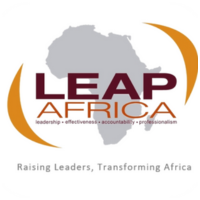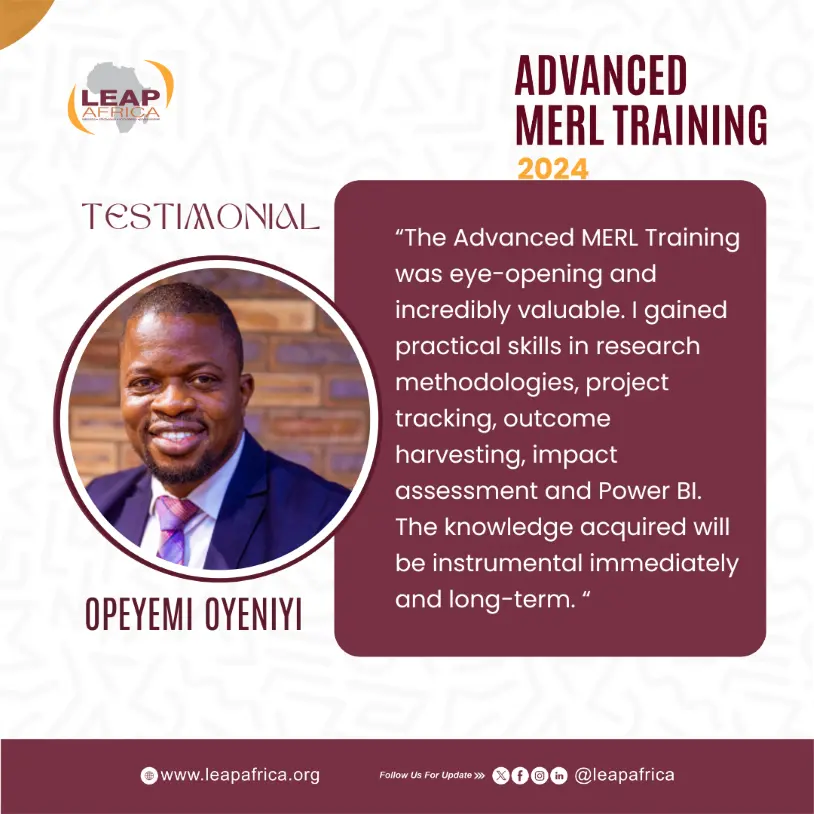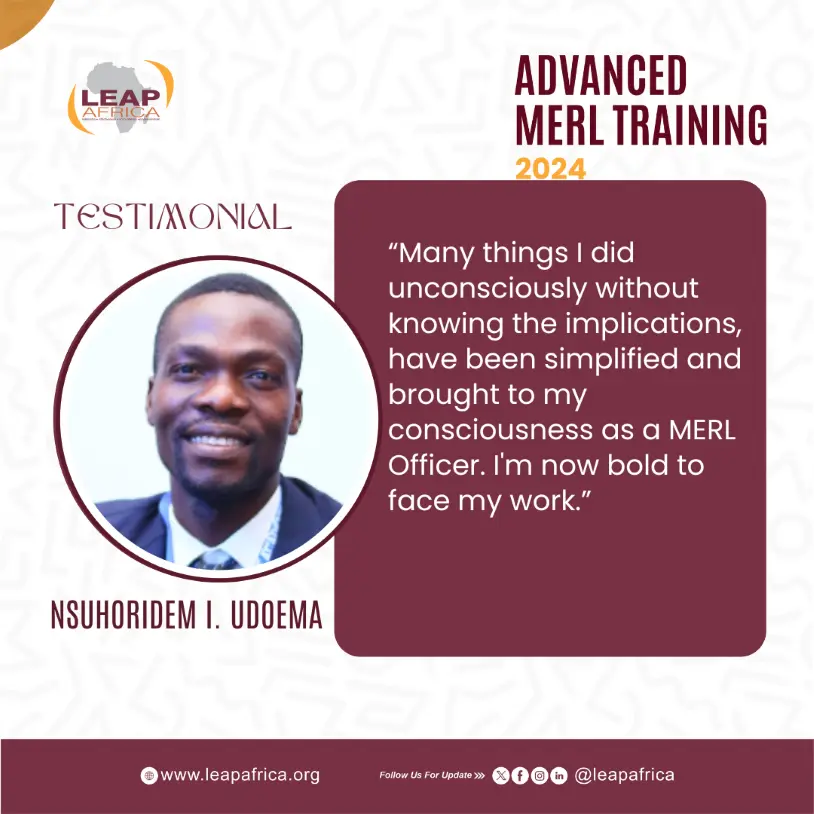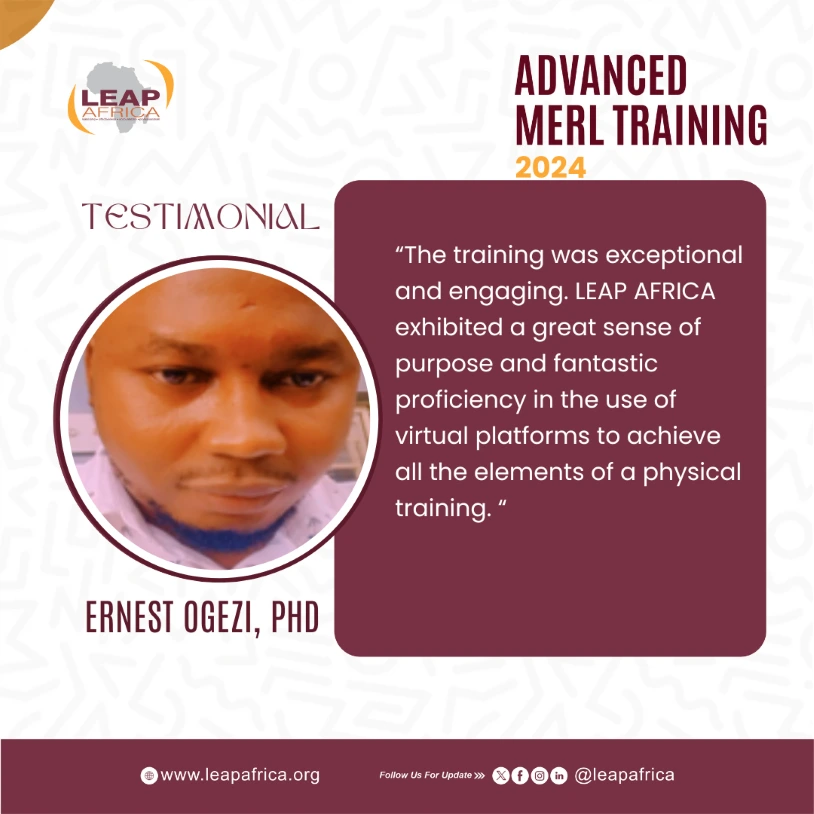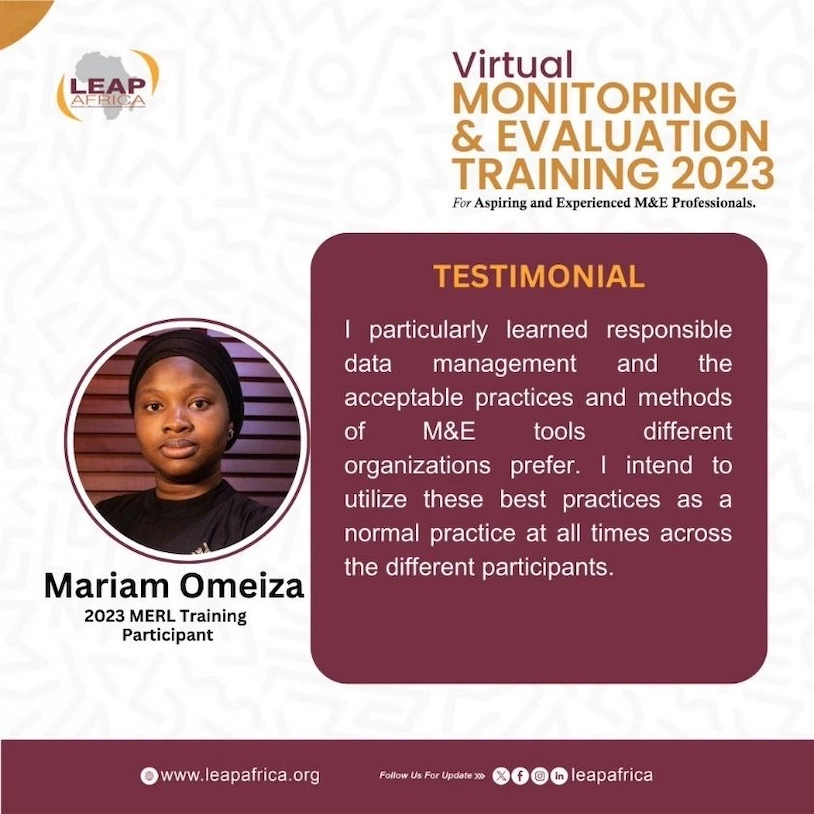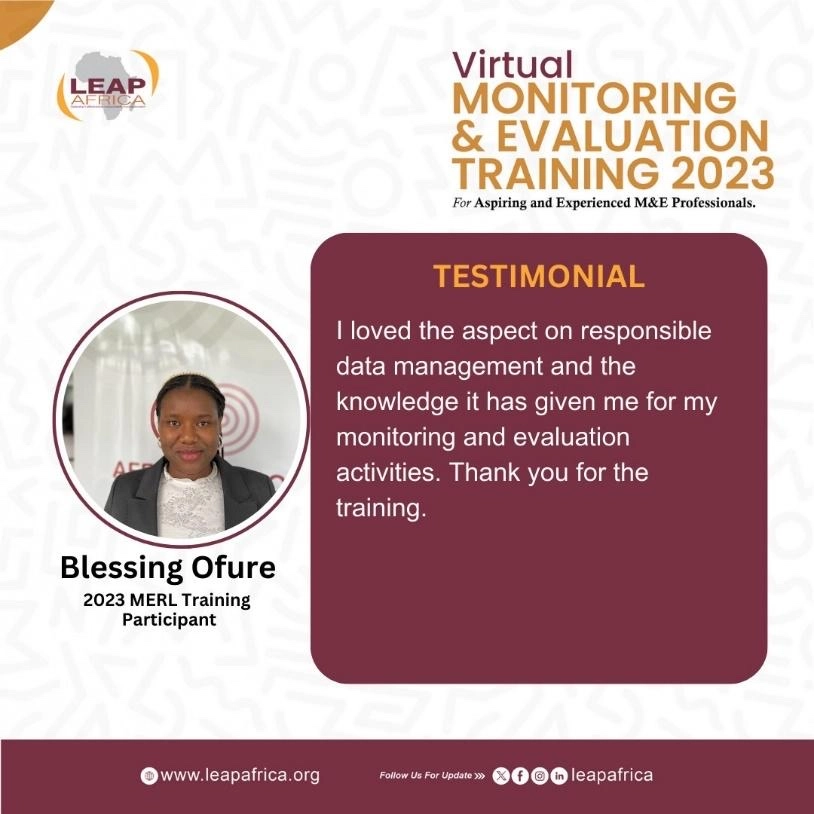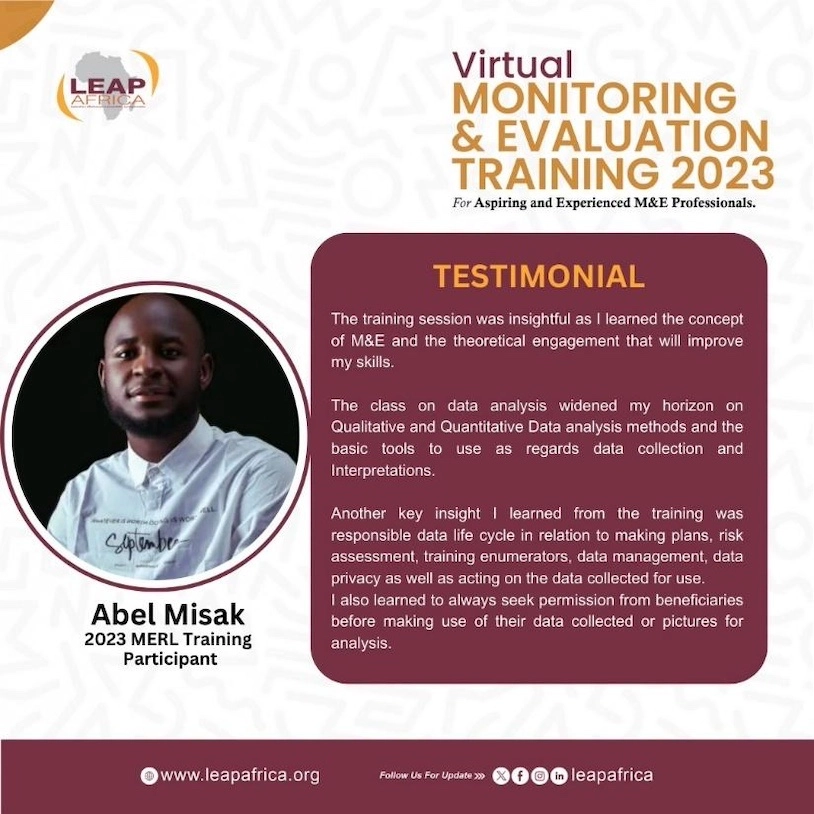Young and Emerging Evaluators
Join LEAP Africa’s M&E Training for early to mid-career M&E professionals, development professionals and project mangers seeking to integrate M&E into their operations
- 28th-30th October, 2025

Training Modules
- Essentials of programme management
- Introduction to result-based monitoring and evaluation
- Designing monitoring and evaluation tools
- Data collection, analysis and tools for M&E
Essentials of programme management
Focus Areas
- Logical Framework Approach (LFA),
- Theory of Change, Results-Based Management (RBM)
- Participatory Monitoring & Evaluation (PM&E)
- Adaptive M&E
Objectives
- To understand various M&E frameworks and their application in different contexts.
- To enhance knowledge of M&E methodologies for improved program design and implementation.
Inclusive and Gender Responsive Approaches to MEL
Focus Areas
- – Gender analysis tools
- – Intersectionality in MEL
- – Evaluation methods
- – Addressing power dynamics
- – Gender mainstreaming in M&E systems
Objectives
- – To explore gender-sensitive approaches and tools for MEL.
- – To integrate gender equality principles into M&E systems and evaluations.
Impact Evaluation: Approaches, Principles, Ethics, and Best Practices in MERL Research
Focus Areas
- Impact evaluation designs and methodologies
- Randomized Control Trials (RCTs)
- Quasi-experimental designs
- Propensity Score Matching
- Theory-based evaluations
- Longitudinal studies
- Causality and Attribution
Objectives
- – To deepen understanding of impact evaluation designs and methodologies.
- – To explore methods for determining causality and attribution in evaluations.
- – To provide advanced skills in assessing the causal impact of interventions.
Research in MERL: Principles, Ethics, and Good Reporting
Focus Areas
- – Research methodologies for MEL
- – Ethical principles in research and MEL
- – Informed consent and confidentiality
- – Reporting standards and transparency
Objectives
- – To equip participants with the tools to conduct ethical research within MERL.
- – To ensure participants can report findings with integrity, clarity, and ethical responsibility.
Evaluation Commissioning, Learning and Knowledge Management Systems and Responding to MERL-Inclined RFPs for Organizations
Focus Areas
- – Evaluation commissioning processes
- – Managing external evaluators
- – Knowledge sharing mechanisms
- – Building organizational learning systems
- – Adaptive learning frameworks
- – Strategies for responding to MERL-inclined RFPs effectively
Objectives
- – To enhance knowledge of commissioning evaluations and managing evaluation teams.
- – To promote knowledge management and organizational learning within M&E systems.
- – To build capacity for responding to MERL-inclined RFPs and positioning organizations for successful bids.
Individual
N
120,000
-
Access to Course Materials
-
Access to Live Training Sessions
-
Certificate of Completion
Group/Organization
N
100,000
-
Access to Course Materials
-
Access to Live Training Sessions
-
Certificate of Completion
CLICK TO APPLY
This discount applies to groups of 2 or more
Individual
USD
80
-
Access to Course Materials
-
Access to Live Training Sessions
-
Certificate of Completion
Group/Organization
USD
70
-
Access to Course Materials
-
Access to Live Training Sessions
-
Certificate of Completion
CLICK TO APPLY
This discount applies to groups of 2 or more

